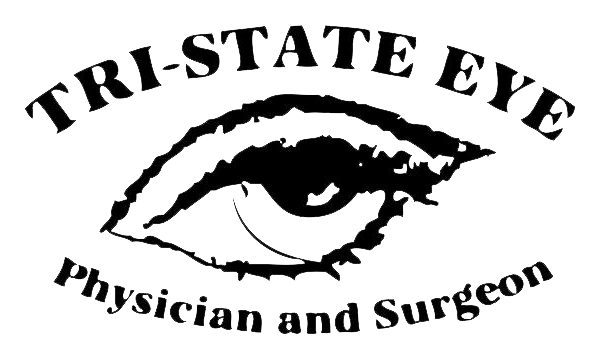What is Crystalens?
Crystalens is an intraocular lens that, unlike a standard IOL, can treat both a person's cataracts and a person's presbyopia (loss of near and intermediate focusing ability). You probably noticed in your forties that you started to lose some of your up-close vision and had to start wearing reading glasses; this was due to a loss of accommodation. Crystalens is designed to recreate your accommodation and reduce or eliminate wearing glasses. The unique Crystalens can eliminate glasses for most activities. Crystalens was modeled after the human eye. Like the natural lens, it uses the eye muscle to flex and accommodate in order to focus on objects in the environment at all distances. Crystalens dynamically adjusts to your visual needs. Crystalens is designed to allow the optic, or the central circular part of the lens that you see through, to move back and forth as you constantly change focus on images around you. Crystalens flexes as you focus your vision.
How does the Crystalens work?
Crystalens replaces the eye's natural lens and is designed to mimic the eye's natural focusing ability, thereby enabling vision across a broad range of distances comparable to a healthy eye. As with the natural lens, Crystalens accommodates, or moves and flexes, in response to ciliary muscle contractions in the eye. These contractions drive forward movements of the lens so the eye can maintain a clear image as it focuses on near, intermediate and far objects.
Here is the Crystalens being used to focus on a near object
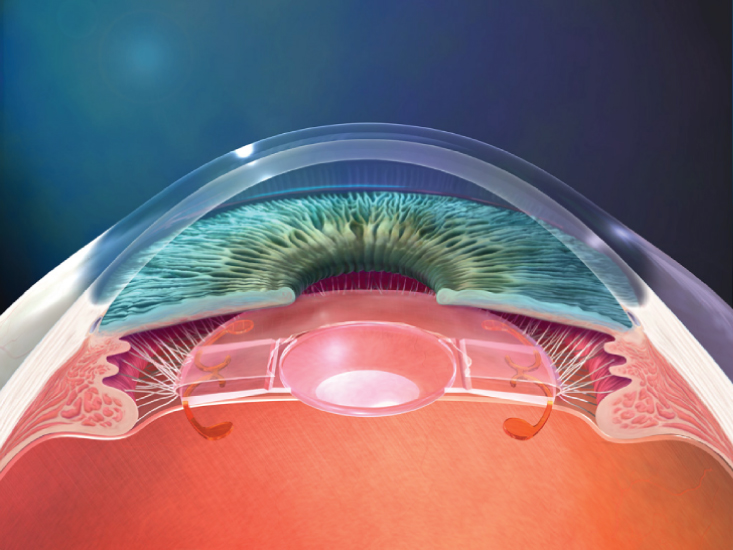
Here is the Crystalens in its neutral focusing state
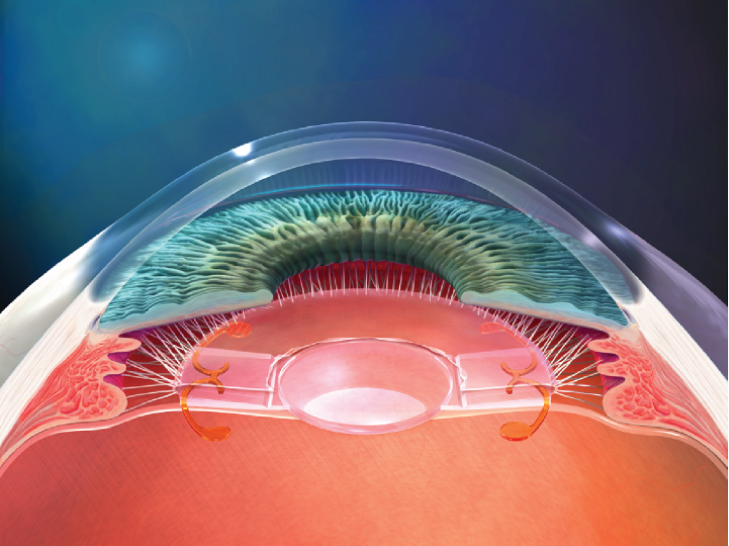
Here is the Crystalens being used to focus on a distant object
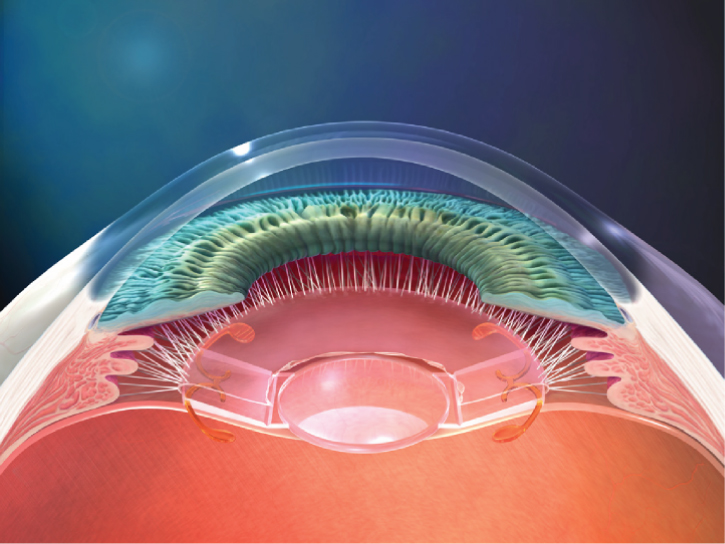
How is this different from regular cataract surgery?
In the past, cataract surgery was only able to treat a patient's cataracts, so patients would still be dependent on glasses for most of their daily activities, especially for up close and intermediate activities. Crystalens will correct for more than just your cataracts. Crystalens can offer you a fuller range of vision and reduce or eliminate your dependence on glasses. Significantly more patients implanted with a Crystalens (88.4%) could see better at all distances then patients implanted with a standard IOL.
Is Crystalens the only FDA approved accommodating IOL?
Crystalens was the first presbyopia correcting IOL introduced into the United States market and is currently the only FDA-approved accommodating IOL. Crystalens addresses the limitations of standard monofocal IOLs and multifocal IOLs by providing several advantages to patients.
Crystalens moves and changes shape using the eye's natural focusing mechanism, instead of remaining fixed and stationary within the eye. This movement, or accommodation, allows the eye to focus on objects across a broad range of distances to reduce or eliminate dependence on glasses. In particular, this accommodation provides significant advantages in addressing intermediate vision.
Unlike multifocal lenses, Crystalens directs all available light received by the eye to a single focal point, comparable to that of a healthy natural lens.
How do I know if I am a good candidate?
If your eyes are healthy, you have not had previous cataract surgery and you have no major health problems, you may be an excellent candidate for Crystalens. Your doctor will perform a thorough exam and advise if Crystalens is right for you.
How is Crystalens different from other lifestyle lenses on the market?
Crystalens is the only accommodating intraocular lens on the United States market. As with the natural lens, Crystalens accommodates, or moves and flexes using an innovative design, in response to ciliary eye muscle contractions. These contractions drive forward movement of the lens as it focuses on near, intermediate and far objects.
Will I be able to read in all lighting conditions?
Crystalens works similarly to your natural lens in that it delivers 100% of available light rays at all distances including near, far, and intermediate. Unlike many multifocal IOLs on the market, lighting conditions have very little impact on patients with Crystalens. Crystalens directs all available light received by the eye to a single focal point, resulting in quality of vision comparable to a healthy natural lens. Patients have reported very minimal disturbances. However, it is recommended that you use good lighting when reading.
Will I experience halos and glare? Will this lens effect how I drive at night?
All IOLs, including standard monofocal IOLs, can create some degree of halos and glare. Glare and halos have sometimes been observed with the Crystalens. However, unlike a multifocal IOL, Crystalens works similarly to your natural lens in the way it delivers available light rays at all distances -- near, far, and intermediate. As a result, Crystalens patients typically experience fewer halos and less glare than a multifocal IOL patient.
Will insurance/Medicare cover any of the procedure?
Generally speaking, Medicare will not cover the cost of a premium IOL like the Crystalens. You will be responsible for the cost of the Crystalens since your insurance will not cover the procedure. With Crystalens, you are receiving an additional benefit of presbyopia correction that will allow you to enjoy a fuller range of vision with decreased dependence on glasses.
What about my intermediate vision, like working on the computer?
In the Crystalens clinical trials, patients reported good intermediate vision. Most Crystalens patients are able to see their computers, dashboards and anything else at arm’s length without glasses.
Will Crystalens stop working over time?
Crystalens surgery is permanent and there is no evidence that the lens will stop working over time. Patients have had Crystalens implanted in their eyes for many years with no change in its ability to flex. It is an extremely well-tested and durable design. In fact, there is clinical evidence to support that most patients' vision continues to improve with time.
Questions Regarding The Crystalens Surgery Procedure
Every patient is different and only your surgeon can fully explain the details of your Crystalens procedure. However, the following information may be helpful for most patients.
Should I have the procedure in both eyes?
Typically cataracts will develop in both eyes, and we recommend that the surgery be done in both eyes. Usually you will have surgery on the second eye within 3-4 weeks of the first eye.
When will I be able to return to my normal activities?
Typically you will be able to return to normal activities within two weeks after surgery.
Your eyes may be sensitive to the touch for a few days, and you should avoid strenuous activity and rubbing your eye. It is important to avoid lifting or straining that would increase pressure on your eye.
You can shower, but avoid getting soap in your eyes. Refrain from eye makeup for several weeks. You should also avoid public pools and hot tubs.
What should I expect during the recovery period?
Patients vary widely in how they are affected during the recovery phase. For example, for some patients it takes longer for their near vision to come into focus, while others achieve great near vision almost immediately. The best way to learn about the recovery period is to talk to your surgeon about the procedure.
How often will I need to have my eyes checked after surgery?
Your doctor will advise you based on your procedure. Typically, the doctor will see you one day after surgery, after 2-4 weeks and again around 3-6 months after surgery. Thereafter, an annual exam is sufficient.
Will I have to have cataract surgery again?
Once your cataracts are removed and replaced with an IOL, you will never need to have cataract surgery again. Occasionally, several months after the lens has been placed in the eye, your vision may start to become cloudy again. This can happen with any type of IOL. This is sometimes called posterior capsular opacification (PCO) and refers to the clouding of the membrane that surrounds the implant.
Anatomy and Conditions of the Eye
Understanding Cataracts
The eye's natural crystalline lens helps us focus on people and things at varying distances. Unfortunately, as we grow older this lens often stiffens and hardens, and without its youthful suppleness, it loses its ability to focus, creating vision problems. This condition - for most, a natural consequence of aging - is called presbyopia. Some people begin experiencing the early effects of presbyopia (such as gradual loss of near vision) in their mid-40s.

As we age, these changes occurring to the natural crystalline lens can lead to the development of cataracts. By age 65, a large percentage of us will develop a cataract, most often typified by cloudy/fuzzy vision. With a cataract you may have difficulty seeing in extremely bright light or low lighted conditions.
Developing a cataract doesn't mean a permanent loss of vision quality, or having to give up the things you love, because cataract surgery is a safe, effective way to improve your vision. Cataract surgery is the most commonly performed surgery in the United States, with well over 2 million Americans having the procedure every year. Performed almost exclusively on an outpatient basis, cataract surgery is microsurgery, whereby the natural lens is removed and replaced with what is called an intraocular lens (IOL). The procedure is highly successful and most people regain very good distance vision.
During cataract surgery, your physician will replace your natural lens with an IOL. Today there are multiple types of IOLs, each delivering a different performance profile based on how the lens is designed. Here are the basics about the three main types of IOLs:
Standard Monofocal IOLs
A standard monofocal IOL is a fixed lens (it doesn't move) that is designed to deliver improved vision at just one distance (usually far). The potential drawback is that after surgery, you will probably need to wear glasses for near and intermediate vision, even if you didn't wear glasses before surgery.
Multifocal IOLs
A multifocal lens uses multiple visual zones that are built into the lens itself to provide vision at various distances. It's almost like the rings of a target, with some rings being dedicated to distance vision, while others are used for near vision, similar to having a bifocal or trifocal lens inside the eye. A multifocal IOL projects multiple images, requiring your brain to adjust to the differences. Some patients have difficulty adjusting to seeing this way. Additionally, intermediate vision (subject at arm's length) can be compromised because the technology is designed mainly for near and distance vision, at the exclusion of intermediate vision. With multifocal IOLs, patients can have potential issues of glare and halos especially when driving at night.
Accommodating IOLs
As the name implies, an accommodating lens "flexes" or "accommodates" using the eyes natural muscles to focus on subjects at various distances, delivering a continuous range of vision - near, intermediate and far. Crystalens is the one and only FDA-approved accommodating lens available in the United States. Crystalens can reduce or eliminate your dependence on glasses. More than twice the number of patients implanted with Crystalens could see at all distances compared to a standard IOL.
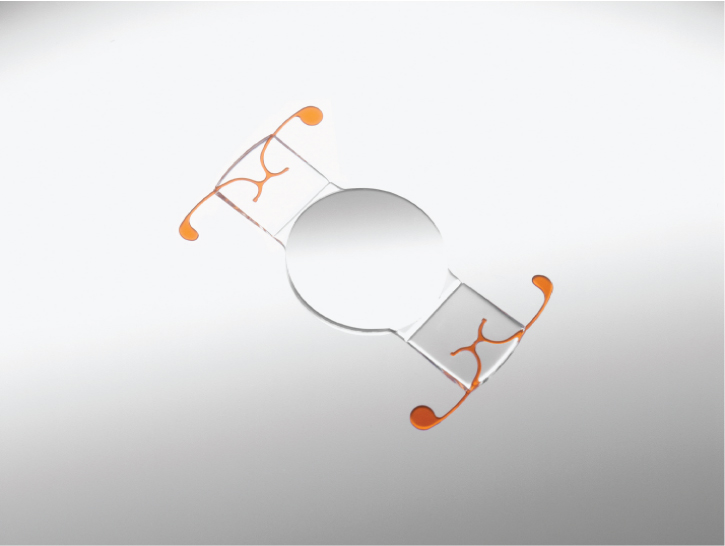
Frequently Asked Questions about Surgery
• Cataract surgery is one of the safest and most common surgeries in the world.
• More than 3 million cataract surgeries are performed every year in the U.S.
• More than 50% of Americans over 65 have developed cataracts in one or both eyes.
• Everyone who lives long enough will develop cataracts.
• 91% of cataracts are caused by the aging process.
• Most people, usually beginning in their mid forties, start to experience presbyopia (blurred near vision) even if they have had great vision their whole lives. Glasses are typically needed for activities such as reading, sewing, or working at the computer.
Frequently Asked Questions about Crystalens
• Patients who are good candidates for standard monofocal IOLs are typically good candidates for Crystalens. If a patient has healthy eyes, has not had previous cataract surgery, and does not suffer from any major health problems then he or she is likely to be a good candidate.
• More than twice the number of patients implanted with Crystalens could see well at all distances compared to a standard IOL.
• Most Crystalens patients have reduced their dependence on glasses.
• Most Crystalens patients have reduced their dependence on glasses and are able to read the newspaper or a phone book without glasses.
• Most Crystalens patients are able to see their computers, dashboards and anything else at arm's length without glasses.
• Many of our Crystalens patients can see well enough to do away with their reading glasses, bifocals, or contact lenses.
• Crystalens procedure is highly successful and most people regain very good distance vision.
Terminology adn Glossary
Accommodation - is the ability of the natural crystalline lens to adjust, and with the natural contractions of the muscle in the eye, to focus on objects through a range of near, intermediate, and far distances.
Accommodating lens - as with the natural lens, an accommodating lens moves and flexes, in response to ciliary muscle contractions in the eye. These contractions drive forward movements of the lens so the eye can maintain a clear image as it focuses on near, intermediate and far objects. Crystalens is the first and only accommodating lens approved by the FDA.
Cataracts - an irreversible progressive condition that diminishes vision quality due to a "clouding or hardening" of the natural crystalline lens in your eye that usually gets worse over time.

- Ciliary muscle - the muscle that controls the shape and position of your lens allowing it to focus on near, distant, and intermediate objects.
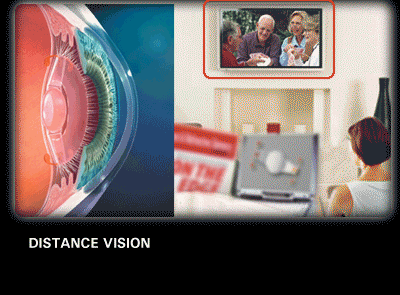
- Crystalline lens- the natural lens in the eye that helps to focus light on the retina.
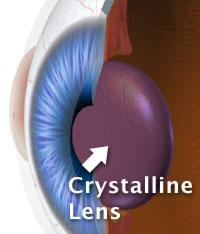
- Cornea- the clear portion of the eye that covers the front of the eye including the pupil and iris.
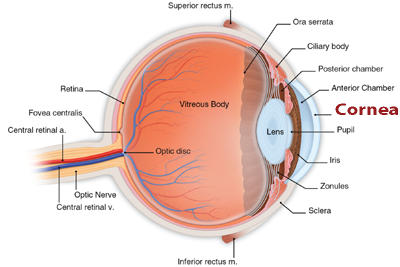
- Intraocular lens (IOL) Intraocular lenses, or IOLs, are implantable devices that replace the natural lens in the human eye, typically after the natural lens has developed a cataract.
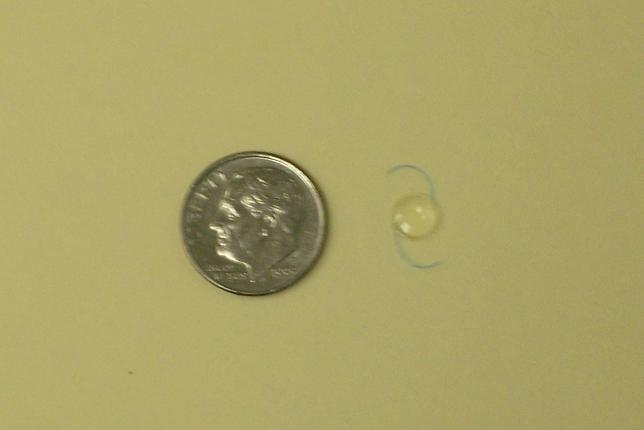
- Iris - the central, colored portion of the eye.
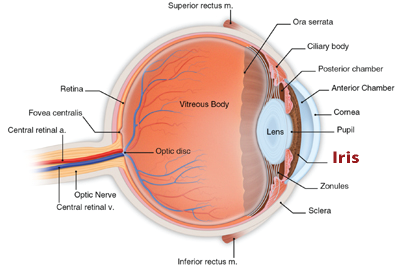
- Multifocal IOL- an artificial lens that replaces a natural lens, typically after the lens has developed a cataract. This is a presbyopia correcting IOL that does not accommodate, but instead utilizes multiple visual zones that send split images of light to the brain. This type of IOL can often cause visual disturbances.
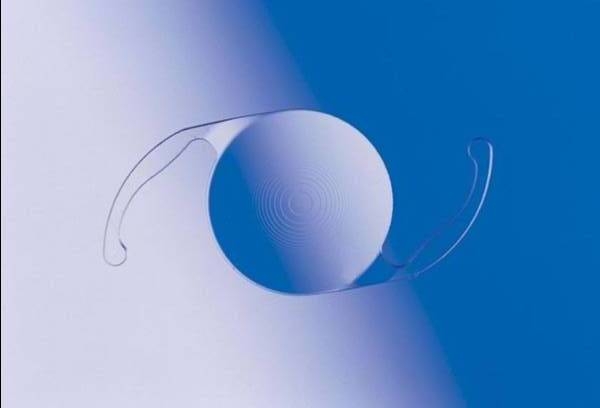
- Presbyopia- a loss of accommodation or ability to focus on near and intermediate objects due to the hardening of your natural lens. This condition usually effects patients in their forties and requires glasses for seeing near objects.
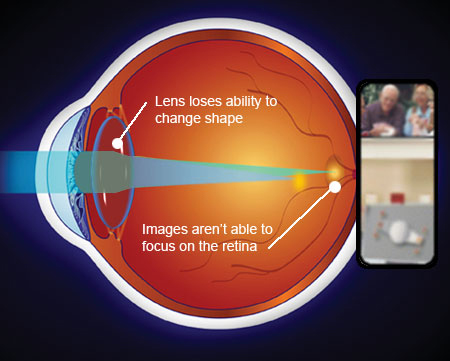
- Pupil- the circular black central portion of the eye that regulates how much light enters the eye. The pupil adjusts based on lighting conditions.
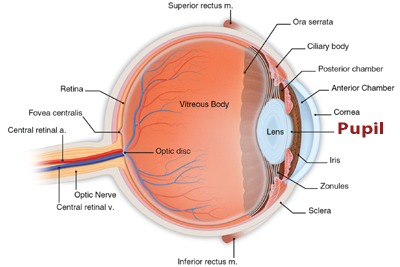
- Retina- The receptor located in the back of the eye that sends image messages to the brain.
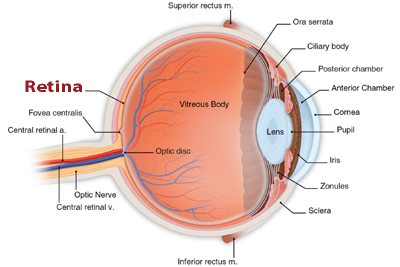
- Standard Monofocal IOL- an intraocular lens that replaces a natural lens, typically after the lens has developed a cataract. This IOL allows for only one focal point, usually at distance leaving the patient dependent on glasses for near and intermediate activities.
Crystalens "Reflections" Video
"Our Reputation Speaks For Itself"
